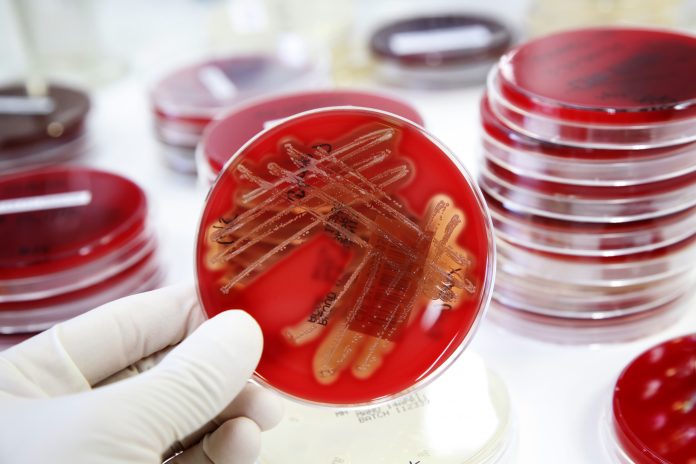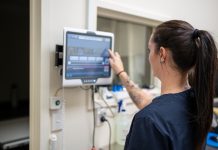Dr Zisis Kozlakidis & Prof Olivier Vandenberg, describe the challenges of clinical microbiology in resource-restricted settings
Clinical microbiology laboratories are critical infrastructures for the early detection and reporting of infectious diseases, and are most effective when organised into an integrated, multi-level network, enabling timely access to appropriate diagnostic tools at each level. Such tiered settings are well-established in Northern Europe and North America for example. However, the situation in the field in resource- restricted settings is markedly different, where clinical microbiology laboratories might exist in isolated pockets of excellence or be altogether absent. The current COVID-19 pandemic and the necessary response to the repeated waves, highlighted the needs and weaknesses of existing systems.
Furthermore, while the response to the pandemic might be a short-term solution, there is a substantial need for longer-term solutions regarding the equally as substantial and ever-growing challenge of antimicrobial resistance (AMR).
AMR develops when micro-organisms evolve to survive exposure to antimicrobial agents, such as antibiotics. The subsequent transmission and spread of these resistant organisms, e.g., pathogenic bacteria, sets the scene for the development of drug-resistant infections. The increase of such infections globally has been associated with the global increase in the use of antimicrobial agents. Drug-resistant infections are estimated to account for 10 million deaths per year worldwide by 2050, posing an economic and biosecurity threat, which threatens to return clinical therapies to the pre-antibiotic era (1). Here, we present some of the main challenges and opportunities for clinical microbiology laboratories in resource-restricted settings concerning AMR.
Clinical microbiology challenges
Resource-restricted settings are disproportionately burdened by infectious diseases and AMR; thus, the need to overcome existing challenges remains acute. Clinical microbiology laboratories continue to face five major challenges: infrastructure, equipment, logistics, quality assurance and human resources. As has often been described, equipment needs to be ‘tropicalised’, i.e., able to withstand harsh climatic conditions of high humidity, high temperature and/or sand (2). At the same time, such equipment needs to be able to perform predictably, ideally with low energy consumption and maintenance. Examples of new designs have arisen in the last few years, taking these aspects into account as, for example, battery-driven centrifuges, where the battery can be recharged using solar power. However, these tend to be single solutions pertaining to specific equipment, not entire laboratories. Beyond the equipment, the consumables need to be designed such that have extended shelf-life and generate minimal waste.
Regarding the staff challenges, the “Strengthening Laboratory Management Toward Accreditation” (SLMTA) programme of the World Health Organization’s Regional Office for Africa (WHO AFRO) was launched in 2009 and provides useful key messages on improving communication between clinicians and laboratory staff. As part of the SLMTA’s toolkit, educational materials are available to staff and can be complemented with real-life scenarios of clinical bacteriology. The programme has been a success in being increasingly adopted (achieving a total of 237 accredited laboratories in 2021), however, this progress is still insufficient to achieve the coverage that is currently needed in the field.
The AMR response
Taking the above into consideration, in 2015, the World Health Organization unveiled a Global Action Plan on AMR, supported by the Global Antimicrobial Surveillance System (GLASS). The aims of the WHO AMR surveillance programme include monitoring trends in infection and resistance to develop standard treatment guidelines. This AMR surveillance should provide early alerts for the emergence of novel resistant strains and aid the rapid identification and control of outbreaks.
AMR is a typical One Health issue as it is interlinked between humans, animals and the environment: the Global Action Plan also recognises the importance of linking information on AMR from three key sectors (humans, food chain and the environment), e.g., collecting data on the antibiotic use in human and animal populations. In this frame, GLASS launched a One Health AMR surveillance called the Tricycle protocol (3) aiming to determine the prevalence of a single “universal” indicator of AMR, Extended- Spectrum Beta-Lactamase producing E. coli (ESBL), in humans (in the general population as well as in clinical E. coli isolates), animals (chicken) and the environment (wastewater and surface water). By its simplicity, this protocol allows determining national trends as well as inter and intra-regional comparisons of ESBL E. coli prevalence and provides information for decision- makers in the medical, animal and environmental fields.
Conclusion
Clinical bacteriology covers a wide spectrum of pathogens and cannot be captured by simple diagnostic and therapeutic algorithms. Moreover, it cannot be easily reduced to a few affordable rapid diagnostic tests or framed in powerful vertical control programmes, due to the healthcare complexities that are unique to each geographical region. A concerted effort has taken place over the last decade to address the existing challenges, for clinical microbiology laboratories and AMR, and to investigate new equipment designs, better-suited consumables, staff training and protocols that would be resource-restricted appropriate. It is hoped that the experiences and investments that took place during the COVID-19 pandemic will act as a catalyst for the development of such infrastructure that can link to AMR surveillance networks, especially in regions that until now did not have a national system for the referral of diagnostic specimens.
References
- O’Neill J. Tackling Drug-Resistant Infections Globally: Final Report and Recommendations 2016. https://www.biomerieuxconnection.com /wp-content/uploads/2018/04/Tackling-Drug-Resistant-Infections- Globally_-Final-Report-and-Recommendations.pdf
- Ombelet S., et al. “Clinical bacteriology in low-resource settings: today’s solutions.” The Lancet Infectious Diseases 18.8 (2018): e248-e258.
- https://www.who.int/publications/i/item/who-integrated-global- surveillance-on-esbl-producing-e.-coli-using-a-one-health-approach
Disclaimer
Where authors are identified as personnel of the International Agency for Research on Cancer/WHO, the authors alone are responsible for the views expressed in this article and they do not necessarily represent the decisions, policy or views of the International Agency for Research on Cancer/WHO.











